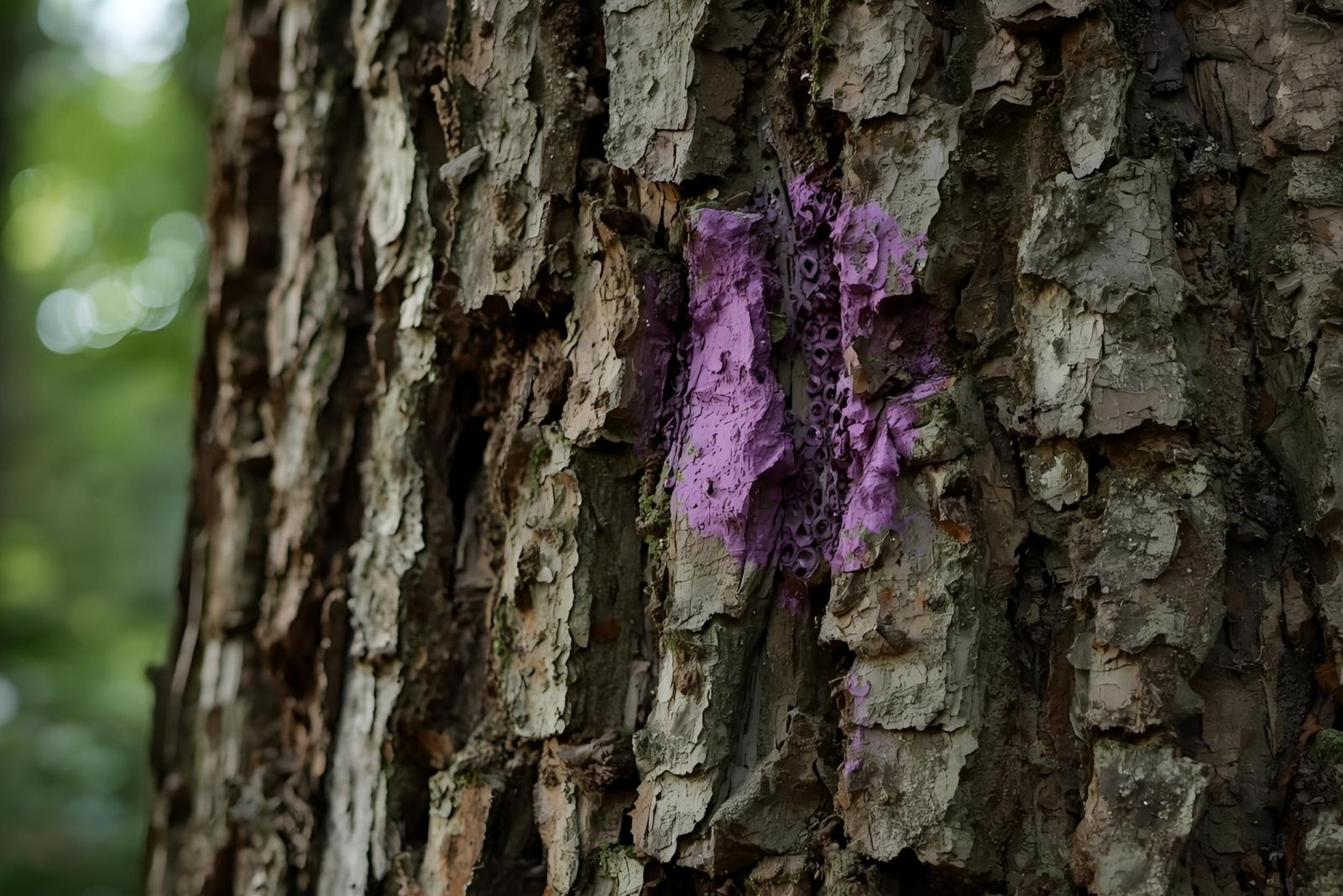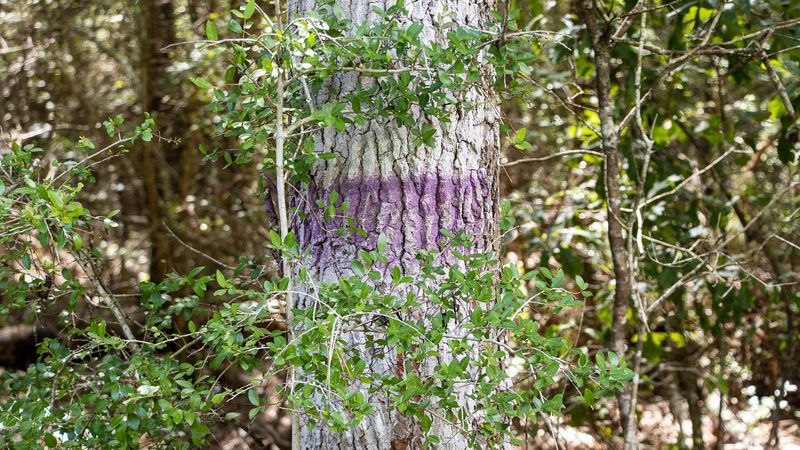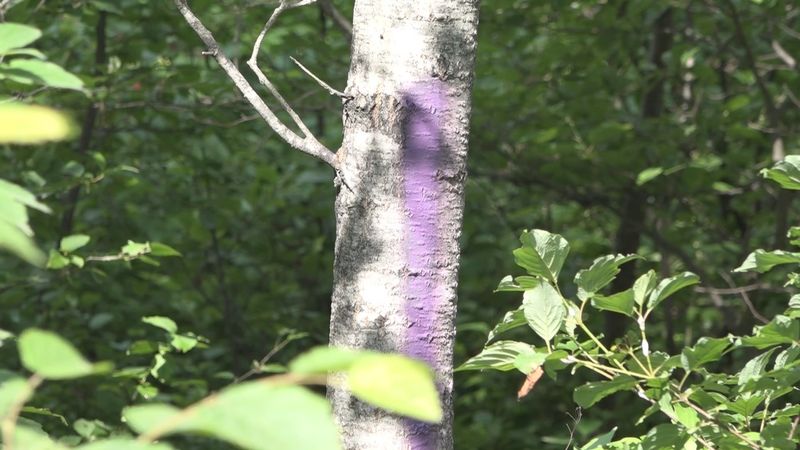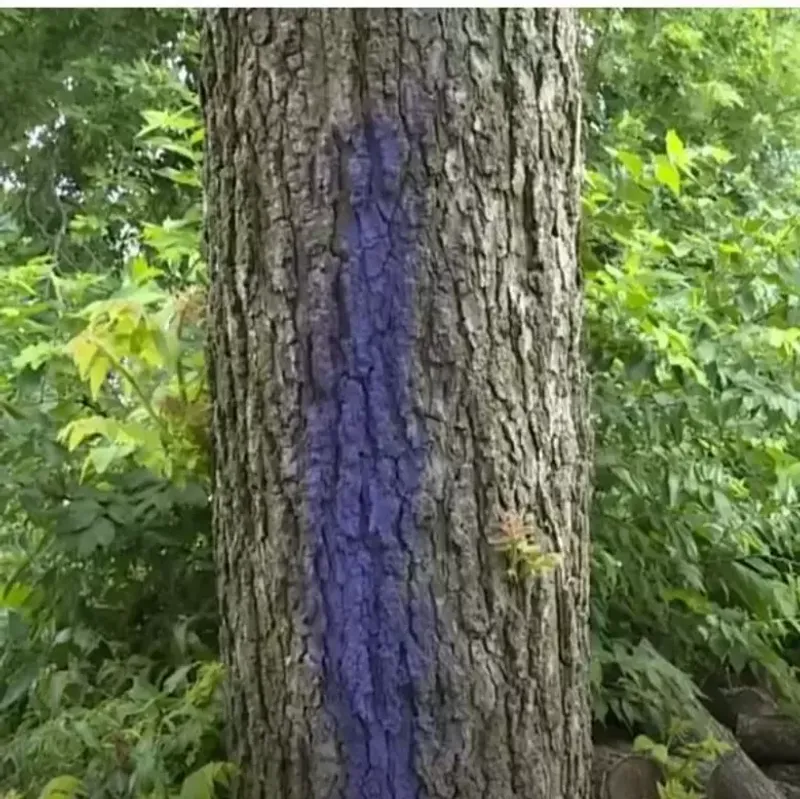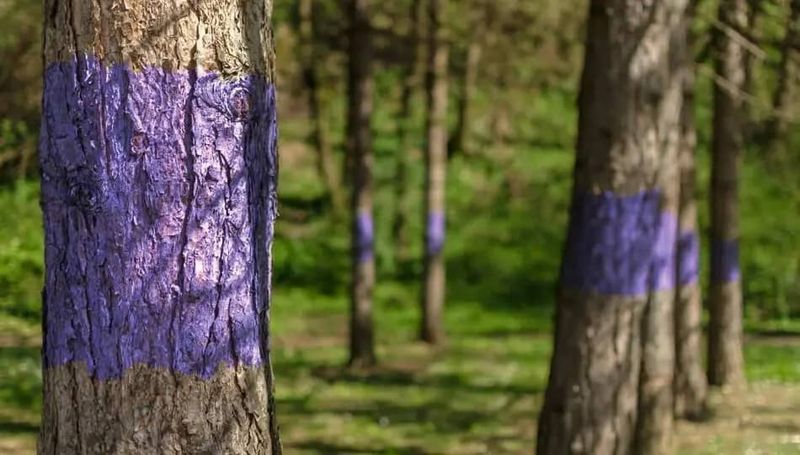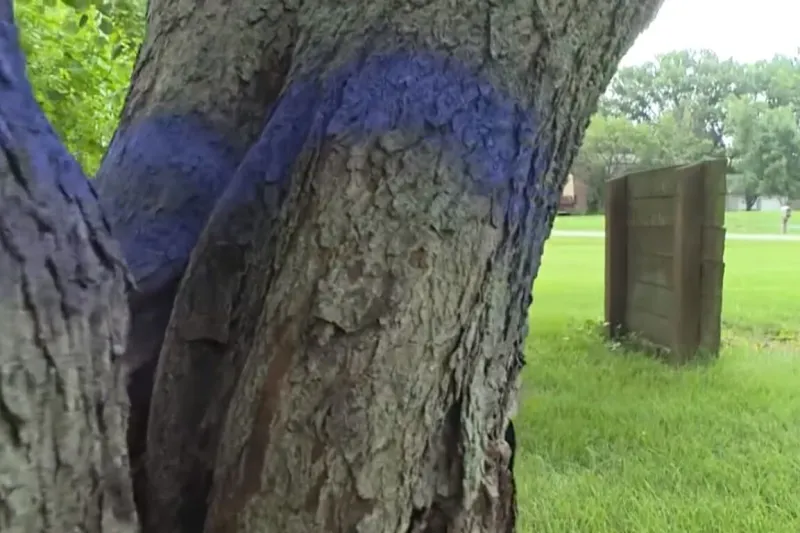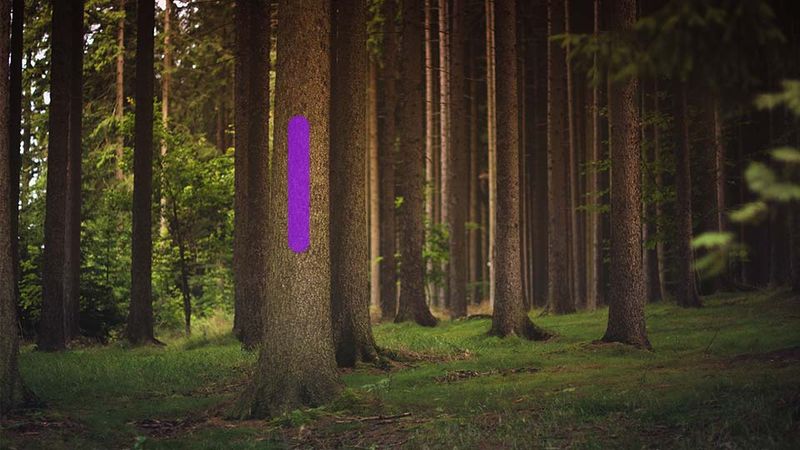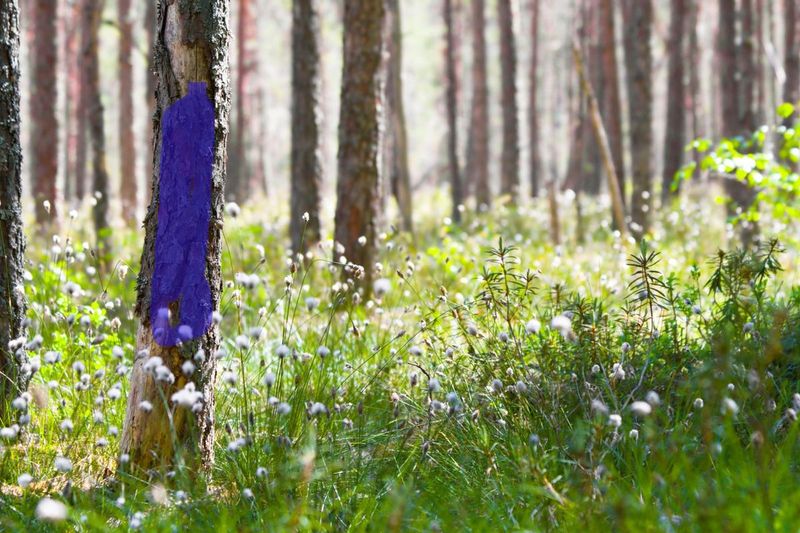Have you ever been walking through the woods in Mississippi and spotted a tree with bright purple paint on its trunk? It might seem strange at first, but those purple marks carry an important message for anyone exploring the outdoors.
Understanding what these painted trees mean can keep you safe and help you respect property boundaries while enjoying nature.
1. Purple Paint Replaces No Trespassing Signs
Mississippi law allows landowners to mark their property boundaries with purple paint instead of posting traditional signs. This method saves money and lasts much longer than paper or metal signs that can fade, rust, or get torn down by weather.
Landowners simply paint vertical purple stripes on trees or posts along their property lines. The paint serves as a legal warning that you’re entering private land without permission.
2. The Purple Paint Law Started In The 1980s
Back in 1987, Arkansas became the first state to pass a purple paint law, and Mississippi followed suit to help rural landowners protect their property. Before this law existed, property owners had to constantly replace stolen or damaged no trespassing signs, which became expensive and frustrating.
Now, over a dozen states recognize purple paint as a legal property marker. The bright color stands out in nature and doesn’t fade quickly like other colors might.
3. Specific Rules Govern How Paint Must Be Applied
Mississippi law requires purple paint marks to follow certain guidelines to be legally valid. Each stripe must be vertical, at least eight inches long, and between three to five feet off the ground where people can easily see them.
The marks need to be placed no more than 100 feet apart along the property boundary. Following these rules ensures hikers and hunters can clearly recognize the warnings before accidentally trespassing on private land.
4. Ignoring Purple Paint Can Lead To Legal Trouble
Crossing onto property marked with purple paint without permission counts as criminal trespassing in Mississippi. Violators can face fines, and in serious cases, even jail time depending on what they were doing on the property.
Hunters who ignore these markers risk losing their hunting licenses and equipment. Always turn around when you see purple paint, even if the property looks empty or unused, because the law protects landowners’ rights.
5. Purple Works Better Than Other Colors In Nature
Landowners chose purple specifically because it rarely appears naturally in forests and fields. Unlike green, brown, or even red, purple immediately catches your attention and signals something man-made.
The color also stays visible through all four seasons, whether leaves are on the trees or not. Other bright colors like orange or yellow might blend with fall foliage or flowers, but purple remains distinct year-round, making it the perfect warning color for property boundaries.
6. Not All States Use The Purple Paint System
While Mississippi recognizes purple paint as a legal property marker, not every state has adopted this system. Some states use different colors like orange or yellow, and others don’t allow paint markings at all.
Before hiking or hunting in unfamiliar areas, research local laws to understand what property markers look like there. What works in Mississippi might not apply in neighboring states, so staying informed helps you avoid accidentally breaking trespassing laws during outdoor adventures.
7. Respecting Painted Boundaries Protects Everyone
When you honor purple paint markers, you help maintain good relationships between outdoor enthusiasts and landowners. Many property owners worry about liability if someone gets hurt on their land or about damage to crops, livestock, and wildlife habitats.
By respecting these boundaries, you show consideration for private property rights while keeping yourself safe and legal. Always remember that purple paint means the same thing as a no trespassing sign.

